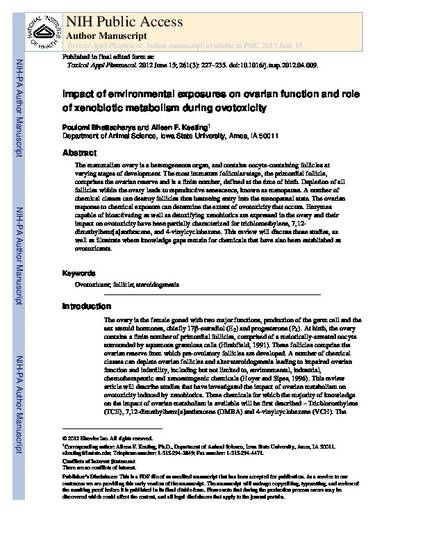
The mammalian ovary is a heterogeneous organ, and contains oocyte-containing follicles at varying stages of development. The most immature follicular stage, the primordial follicle, comprises the ovarian reserve and is a finite number, defined at the time of birth. Depletion of all follicles within the ovary leads to reproductive senescence, known as menopause. A number of chemical classes can destroy follicles thus hastening entry into the menopausal state. The ovarian response to chemical exposure can determine the extent of ovotoxicity that occurs. Enzymes capable of bioactivating as well as detoxifying xenobiotics are expressed in the ovary and their impact on ovotoxicity have been partially characterized for trichloroethylene, 7,12- dimethylbenz[a]anthracene, and 4-vinylcyclohexene. This review will discuss those studies, as well as illustrate where knowledge gaps remain for chemicals that have also been established as ovotoxicants.
Available at: http://works.bepress.com/aileen-keating/32/

This is a manuscript of an article published as Bhattacharya, Poulomi, and Aileen F. Keating. "Impact of environmental exposures on ovarian function and role of xenobiotic metabolism during ovotoxicity." Toxicology and applied pharmacology 261, no. 3 (2012): 227-235. doi: 10.1016/j.taap.2012.04.009. Posted with permission.